Choosing the right Sawzall blade, also referred to as a reciprocating saw blade, is crucial—it helps you cut faster, work safer, and get cleaner results. According to the U.S. National Library of Medicine in the National Center for Biotechnology Information, studies show that using the right blade dramatically reduces breakage and improves safety by up to 12.8 times with the perfect blade. For example, thicker, stronger blades like carbide Sawzall blades can help prevent accidents and make tough cuts easier. Ready to pick the perfect sawzall blade for your project?

Choose the Right Sawzall Blade Tooth
When picking a Sawzall blade (also known as a reciprocating saw blade), TPI (Teeth Per Inch) and tooth design are key. TPI affects how fast and smooth your blade cuts—lower TPI for fast, rough cuts in wood, higher TPI for fine cuts in metal.
Tooth design shapes how the blade handles different materials, controls vibration, and improves cut quality—critical when choosing the best reciprocating saw blades for metal or wood cutting.
At EZARC, we help you cut smarter, not harder—by choosing the right blade for the right job.
What is TPI?
TPI (Teeth Per Inch) is an indication of how many teeth are fitted into one inch of a Sawzall blade or reciprocating saw blade. Choosing the correct TPI is essential when selecting the best reciprocating saw blade for your material.
TPI 3-6: Rapid and aggressive cuts, excellent for wood cutting Sawzall blades and demolition Sawzall blade.
PI 8–14: Good performance on wood, plastic, and multi-material Sawzall blade.
TPI 14–24+: Designed for thin metal, sheet metal, and precision work—ideal for metal cutting Sawzall blades.

Fast Tip: Top TPI by Material
| Material | Recommended TPI | Why |
| Pruning/Wood | 3–6 TPI | Fast cuts with wood cutting Sawzall blades, minimal clogging |
| Demolition | 6–10 TPI | Rapid cuts using Sawzall blades through metal, wood with nails |
| Plastic/PVC | 6–10 TPI | Smooth, controlled cuts with multi-material Sawzall blades |
| Thick metal (pipes, bars) | 8–14 TPI | Prevents overheating and extends blade life using bi-metal Sawzall blades |
| Thin metal (sheets, ducts) | 18–24+ TPI | Clean, precise cuts with metal cutting reciprocating saw blades |
Common Tooth Patterns and Their Uses
It’s not just about how many teeth your Sawzall blade has—but how they’re shaped and spaced. Tooth patterns help determine how the blade bites into the material, controls vibration, and clears debris—key factors when choosing the best Sawzall Blades for metal, wood, or demolition.

Teeth that are evenly spaced and produce smooth, precise cuts.
Best used on: Thin material such as sheet metal, PVC, or plastic where a clean finish is desired—ideal for metal cutting Sawzall blades.

A combination of small and large teeth placed on the blade. This pattern minimizes vibration and snagging.
Best used on: Multi-material reciprocating saw blades and general demolition blades, where nails, screws, or mixed layers are common.

Fine, controlled cutting teeth are set in a wave pattern.
Most suitable for: Thin metal sheets, ducts, and pipes—the wavy set prevents catching or tearing of fragile materials, perfect for bi-metal reciprocating saw blades

Teeth in a repeating pattern with deep gullets for quicker chip removal.
Best used in: Tough work like cutting thick wood, nail-embedded wood, demolition, or plunge cuts using heavy-duty Sawzall blades.
Why TPI + Tooth Design = Better Results: Choosing the right blade—with the ideal combination of TPI and tooth pattern—means faster cutting, cleaner edges, less strain on your saw, longer blade life, and a quicker, easier, and safer experience. Whether you're trimming trees, cutting metal pipes, or demolishing drywall, the right choice of Sawzall Blade makes all the difference.
Choose the Right Sawzall Blade Size
Sawzall blade sizes—including length, width, and thickness—are key factors in selecting the best Sawzall Blade for your project. Choosing an appropriate blade for your material improves cutting speed, safety, and performance. Improper use may result in slow cutting, poor results, or even material damage.
Blade Length
The blade length doesn't just affect how deep you cut—it also influences how wide a cut you can make in a single pass. While the material’s thickness determines cutting depth, a 15 inch Sawzall Blade can slice through wider material more efficiently than a 9 inch one.

Long blades (9–15+ inches): Best for cutting wide or large materials like thick branches, logs, or boards. Ideal for pruning, demolition, or wood cutting Sawzall blades.
Short blades (3–6 inches): Easier to control in tight spaces. Perfect for fine cuts, detailed trimming, or thin material using compact reciprocating saw blades.
Hint: Select a blade that is at least 2 inches longer than the material width to ensure smooth, continuous strokes—a must for effective work using long Sawzall blades for wood or metal.
Blade Width
The width of a Sawzall Blade is measured from the tip of the teeth to the back edge.

Broader Sawzall blades offer more stiffness, giving you better control and stability—especially during tough tasks. They resist bending and vibration, making them a preferred choice for professionals in heavy-duty demolition and aggressive cutting scenarios.
Best suited to: Heavy demolition, Plunge cuts, Cutting wood with nails using bi-metal Sawzall Blades or demolition Sawzall blades
For these jobs, use blades that are ¾ inch or wider.
Narrow blades are less bulky and more flexible, ideal for work in tight spaces or when making curved or detailed cuts.
Best used on: Finish cuts,Fine woodworking, Detailed trimming.
Perfect for wood cutting Sawzall Blades or multi-purpose Sawzall blades where precision is more important than brute force.
Blade Thickness
Sawzall Blades are also categorized by thickness, which directly affects flexibility and strength when cutting dense or hard materials.

Heavier blades (typically .050 inch or greater) are more durable and resistant to bending or breakage. They're ideal for cutting hardwood, thick metal pipes, or demolition tasks using metal cutting Sawzall blades or carbide tipped reciprocating blades.
These are the go-to for demanding work where strength matters.
Note: Thicker blades also cut a wider kerf (cutting channel), removing more material—which may affect precision cutting when working with tight tolerances.
Thinner blades (around .035 inch) are lighter, more flexible, and cut faster with a smoother finish. They're perfect for DIY repairs, fine trim work, or everyday home projects using best reciprocating saw blades for wood.
Choose the Right Sawzall Blade Material
When it comes to making clean, quick, and efficient cuts with a Sawzall saw, the type of blade you use is just as important as the tool itself. Whether you're cutting tree branches, cutting metal pipes, or doing full-scale demolition, selecting the right Sawzall blade material can make all the difference in performance and safety.
At EZARC, we design high-performance Sawzall Blades to suit all types of materials and jobs. To help you choose the best option, here’s a breakdown of the most popular Sawzall blade materials—so you can find the right blade for your next project, whether it involves wood, metal, or multi-material cutting.
Chrome Vanadium Steel (CRV) Blades – Wood and Gardening Blades
CRV Sawzall Blades are the top choice for tasks involving wood cutting or pruning. Manufactured from Chrome Vanadium Steel, they are both flexible and durable—perfect for making fast, clean cuts in natural materials.

Perfect for: Cutting branches and green wood, Woodworking projects, Sawing chipboard, plywood, and softwood, Gardening and plunge cuts.
Use these when you need wood cutting Sawzall blades that offer flexibility and control for precision pruning or everyday outdoor tasks.
Bi-Metal (BIM) Blades Containing 8% Cobalt – The Workhorse of Your Toolbox
Looking for a versatile and durable Sawzall blade? Bi-metal Sawzall Blades are the go-to solution. These blades combine a flexible carbon steel body with high-speed steel teeth, and are often infused with 8% cobalt to boost heat resistance and extend blade life during heavy-duty use.

Perfect for:
Nailed wood – great for renovation and framing work
Metal profiles and pipes – ideal for metal cutting Sawzall blades
Demolition tasks – use as bi-metal demolition blades
Screws and composite materials – reliable for cutting mixed or layered materials
Whether you’re cutting through embedded nails or switching between wood and metal, bi-metal Sawzall blades deliver long-lasting performance in both DIY and professional applications.
Carbide Tooth Blades – Toughest Materials, Maximum Strength
When you need extreme durability, carbide Sawzall Blades are your best option. These carbide-tipped Sawzall blades feature a steel body with carbide-welded teeth, making them the hardest, most heat-resistant Sawzall Blades in the market.

Perfect for:
Hard, heavy metals – ideal for metal cutting carbide Sawzall blades
Nailed and screwed wood – especially in demolition or renovation
Concrete blocks and masonry – heavy-duty demolition Sawzall Blades
Outdoor, soiled wood cuts – like roots and pressure-treated lumber
Suggested EZARC Carbide Blades are built to handle tough metal, concrete, and dirty wood, ensuring long blade life and maximum strength.
Frequently Asked Questions
Q: What is the recommended Sawzall blade to use as a beginner?
A: A multi-material reciprocating saw blade with mid-range TPI (10–14) is flexible and easy to use for both wood and metal cutting.
Q: How frequently should I change my Sawzall blade?
A: Replace your reciprocating saw blade when it no longer cuts efficiently, the teeth are dull or missing, or if the cut quality drops—especially for bi-metal or carbide blades under heavy use.
Q: Can I use a single blade on both wood and metal?
A: Yes. A multi-purpose Sawzall blade is designed for that. However, for best performance, always match the blade type—wood, metal, or multi-material—to your specific application.
Ready to Cut Smarter, Not Harder?
From home improvement to professional demolition, EZARC Sawzall Blades are built to deliver. Explore our full range to find the perfect blade for your project.

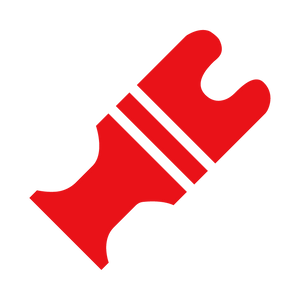 Oscillating Multi-Tool Blades
Oscillating Multi-Tool Blades
 Reciprocating Saw Blades
Reciprocating Saw Blades
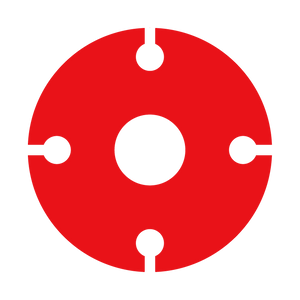 Cutting & Grinding
Cutting & Grinding
 Hole Saw
Hole Saw
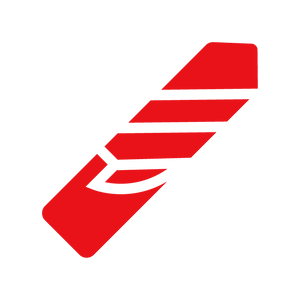 Drilling
Drilling
 Sanding & Polishing
Sanding & Polishing
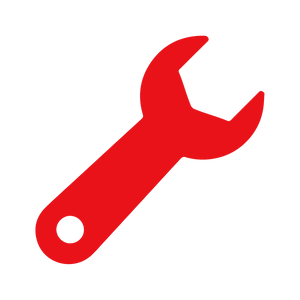 Hand Tools
Hand Tools
 Metal Worker & Fabrication
Metal Worker & Fabrication
 Woodworking & Carpentry
Woodworking & Carpentry
 Electrical & Plumbing
Electrical & Plumbing
 Automotive
Automotive
 Concrete & Masonry
Concrete & Masonry
 Demolition
Demolition
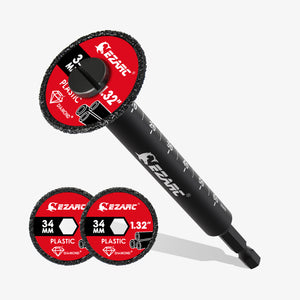 NEW ARRIVALS
NEW ARRIVALS



Dejar un comentario
Este sitio está protegido por hCaptcha y se aplican la Política de privacidad de hCaptcha y los Términos del servicio.